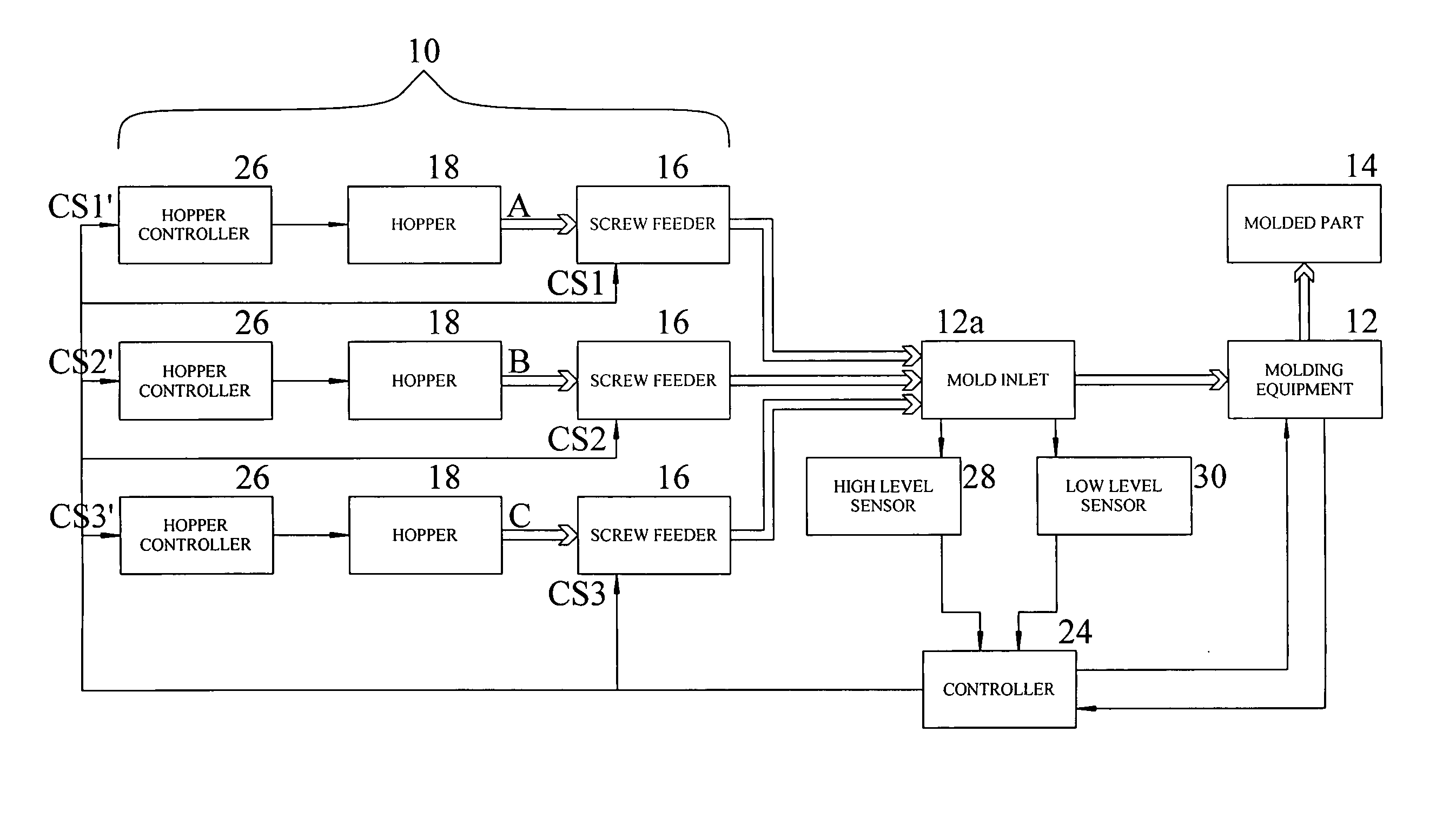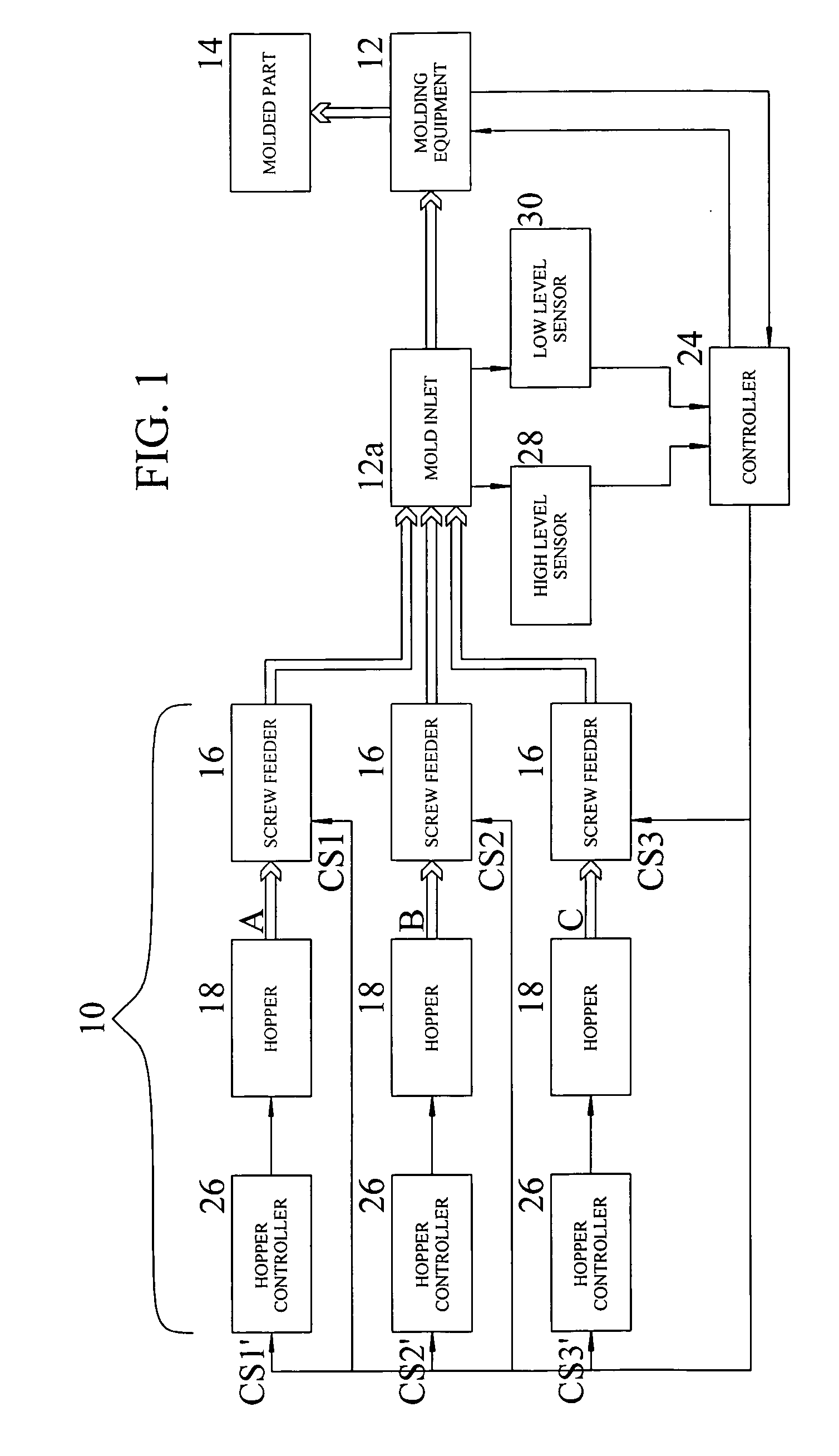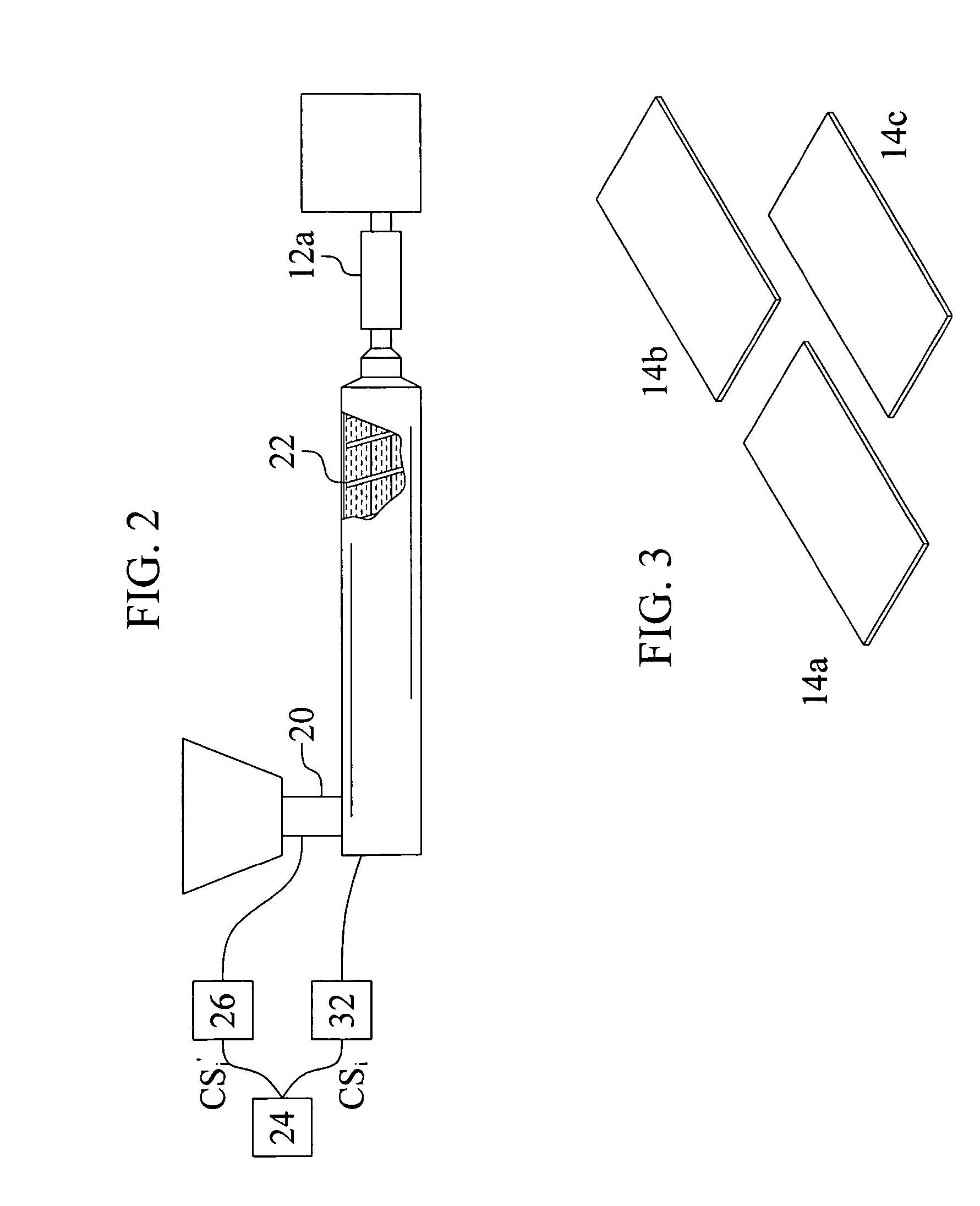Color variation control process for molding plastic and composite multi-color articles
a multi-color, control process technology, applied in auxillary shaping apparatus, manufacturing tools, ceramic shaping apparatus, etc., can solve the problems of product coloring that has not been available, and achieve the effect of reducing or eliminating the downtime of molding equipment, no downtime, and improving strength
- Summary
- Abstract
- Description
- Claims
- Application Information
AI Technical Summary
Benefits of technology
Problems solved by technology
Method used
Image
Examples
example 1
[0047] An article is to be molded with two colors (A, B), sequentially placed, with an approximate ratio of 60% A to 40% B, in a 2 cavity mold with a total volume (including trimmed areas) of 30 pounds of material. The 30-pound volume is modified with a 10% increase factor to obtain a 33-pound modified total volume. The modified mold volume offsets the color placement during production to prevent a noticeable repeating color layout in the finished product. Utilizing the 60% to 40% ratio in relation to the modified total volume, the two colors are fed to the molding equipment as follows: 19.8 lbs of the first color (A), then 13.2 lbs of the second color (B), followed by 19.8 lbs of A and 13.2 lbs of B, repeating this color sequencing through the production run of the molded articles. If the 2 mold cavities are filled in series, this results in a color distribution in the molded articles as follows: 1st article=19.8 A, 10.2 B; 2nd article=3 B, 19.8 A, 7.2 B; 3rd article=6B, 19.8 A, 4....
example 2
[0048] An article is to be produced with the mold and parameters of example 1 except that the color sequence is established with a multiple factor of the ratios of example 1. In this example, the 60%-40% ratio of color sequence is divided into 30% A, 20% B, 30% A, 20% B. In this example, the material is fed to the molding equipment as follows: 9.9 lbs first color (A), 6.6 lbs second color (B), 9.9 lbs A, 6.6 lbs B, and so on. This example will result in molded parts with the same overall color ratios as articles from example 1, but with a more frequent color transition in each article. The same ratios and sequence would result if the 2 cavities of the mold example 1 were filled simultaneously.
example 3
[0049] An article is to be produced with the mold of example 1, but with three colors (A, B, C) utilizing two different color variation ratios. The first ratio will be 20% color A, 20% color B, and 60% color C, followed by a second ratio of 30% color A, 30% color B, and 40% color C, thereafter repeating through the first and second color sequencing ratios. In this instance, the material is fed repetitively to the molding equipment as follows: 6.6 lbs first color (A), 6.6 lbs second color (B), 19.8 lbs third color (C), followed by 9.9 lbs color A, 9.9 lbs color B, 13.2 lbs color C. Utilizing two or more color sequences provides further random color variations in the molded articles.
PUM
| Property | Measurement | Unit |
|---|---|---|
| colors | aaaaa | aaaaa |
| volume | aaaaa | aaaaa |
| mold volume | aaaaa | aaaaa |
Abstract
Description
Claims
Application Information
 Login to View More
Login to View More - R&D
- Intellectual Property
- Life Sciences
- Materials
- Tech Scout
- Unparalleled Data Quality
- Higher Quality Content
- 60% Fewer Hallucinations
Browse by: Latest US Patents, China's latest patents, Technical Efficacy Thesaurus, Application Domain, Technology Topic, Popular Technical Reports.
© 2025 PatSnap. All rights reserved.Legal|Privacy policy|Modern Slavery Act Transparency Statement|Sitemap|About US| Contact US: help@patsnap.com



